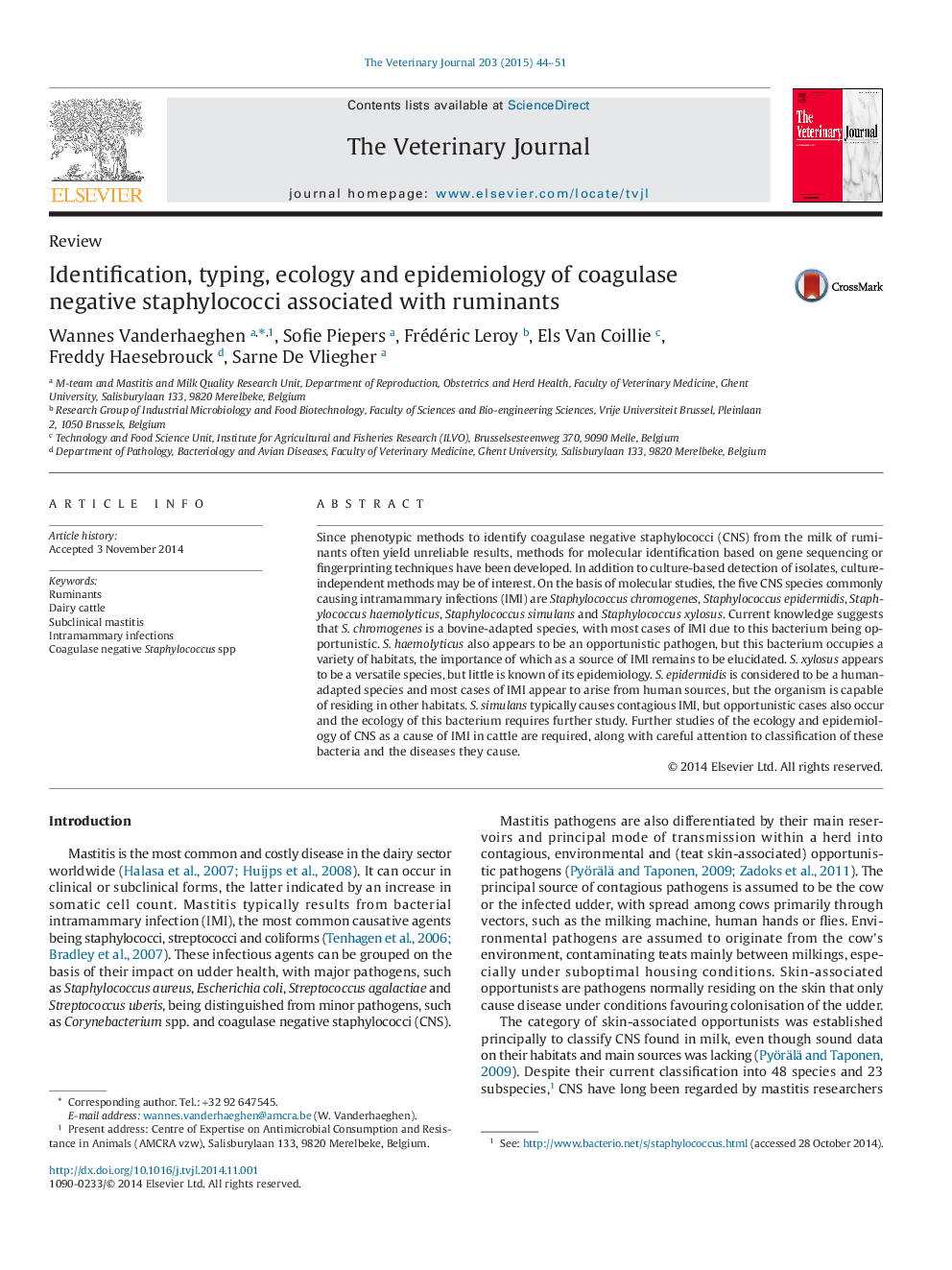| Article ID | Journal | Published Year | Pages | File Type |
|---|---|---|---|---|
| 5797649 | The Veterinary Journal | 2015 | 8 Pages |
â¢Various molecular methods for identification and typing of ruminant coagulase negative staphylococci (CNS) are now available.â¢Five CNS species cause the majority of CNS intramammary infections (IMI) in cows.â¢In an ecological framework, some CNS species can be environmental and others host-adapted.â¢In an epidemiological framework, some CNS IMI can be contagious and others opportunistic.â¢Much is yet to be learned about the ecology and epidemiology of the different CNS species causing IMI in ruminants.
Since phenotypic methods to identify coagulase negative staphylococci (CNS) from the milk of ruminants often yield unreliable results, methods for molecular identification based on gene sequencing or fingerprinting techniques have been developed. In addition to culture-based detection of isolates, culture-independent methods may be of interest. On the basis of molecular studies, the five CNS species commonly causing intramammary infections (IMI) are Staphylococcus chromogenes, Staphylococcus epidermidis, Staphylococcus haemolyticus, Staphylococcus simulans and Staphylococcus xylosus. Current knowledge suggests that S.âchromogenes is a bovine-adapted species, with most cases of IMI due to this bacterium being opportunistic. S.âhaemolyticus also appears to be an opportunistic pathogen, but this bacterium occupies a variety of habitats, the importance of which as a source of IMI remains to be elucidated. S.âxylosus appears to be a versatile species, but little is known of its epidemiology. S.âepidermidis is considered to be a human-adapted species and most cases of IMI appear to arise from human sources, but the organism is capable of residing in other habitats. S.âsimulans typically causes contagious IMI, but opportunistic cases also occur and the ecology of this bacterium requires further study. Further studies of the ecology and epidemiology of CNS as a cause of IMI in cattle are required, along with careful attention to classification of these bacteria and the diseases they cause.
